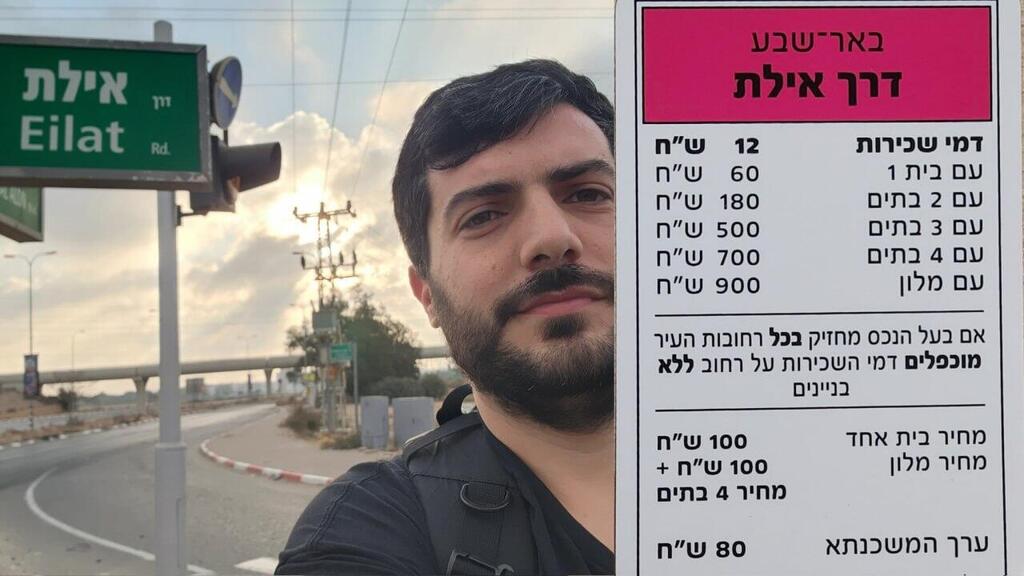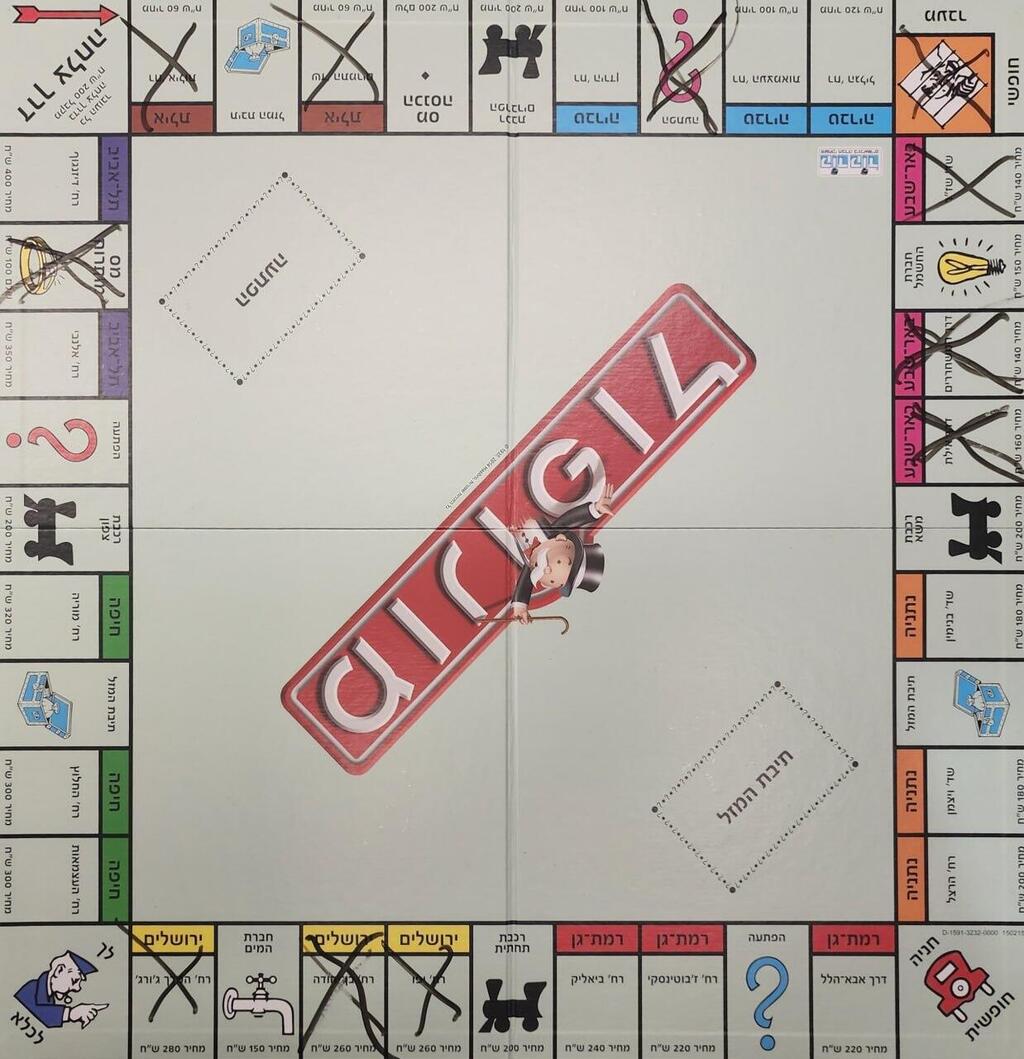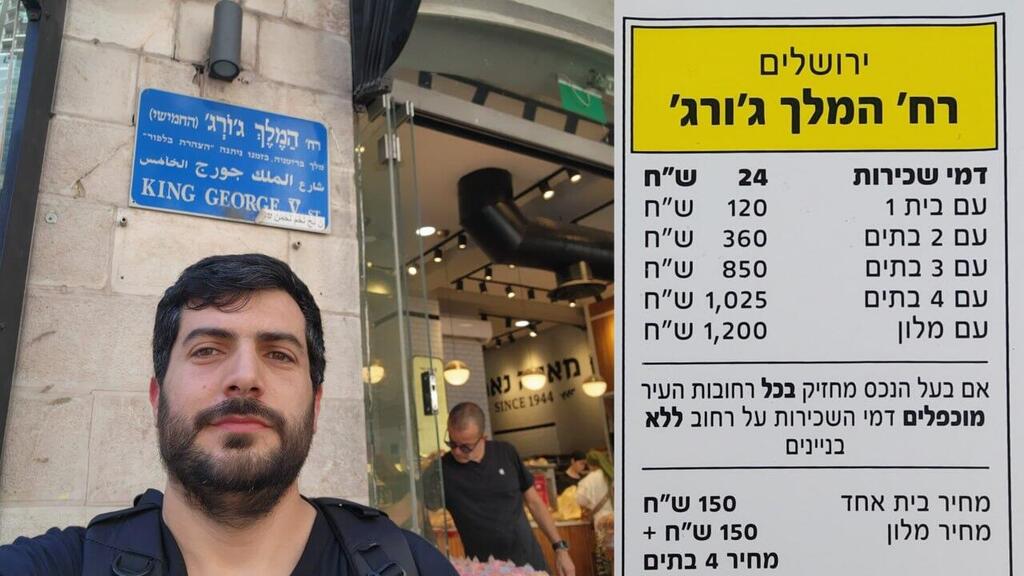Getting your Trinity Audio player ready...
Think you travel a lot by public transportation? Think again. On Sunday at 3:30 a.m., about an hour and a half before Israel launched a preemptive strike on Lebanon and hundreds of rockets and drones were fired at the country, Tal Kessler, 30, embarked on a journey to visit every square on the Monopoly board–using only public transportation.
Kessler, who describes himself as a “public transportation enthusiast,” documented his unusual journey on his social media account on X (formerly Twitter), where it garnered hundreds of shares, thousands of likes, and nearly 300,000 views. "I thought it might reach a few dozen, maybe a few hundred," Kessler told Ynet.
“I’m from Bat Hefer and work at a café in the village,” he said. “In this very small community of public transportation enthusiasts, there’s something called a ‘station run.’ In London, where there’s a subway, it’s called a ‘Tube run’ or ‘Metro run.’ It’s when someone visits every station of a public transportation system, and people actually compete to break records. In Israel, there isn’t really a system like that, except for Israel Railways. I thought of the Monopoly idea over a year ago. One day I checked, realized it was possible, and decided to do it now because during the summer there are early buses from Eilat that head north, so it made the most sense.”
Kessler spent about 16 and a half hours on the road. "I started in Eilat, arriving the day before because I knew I needed to set out early. From Eilat, I headed to Be'er Sheva, where I stopped by the prison for the 'Jail' space, visited the streets in Be'er Sheva, and then traveled to Jerusalem, where I also hit the Income Tax square before heading to the Tel Aviv metropolitan area. I got off at Savidor Station, went straight to Jabotinsky Street, which connects to Abba Hillel and Bialik streets – another intersection away. Then I took the ‘Dankal’ south to Carlebach and used the red line as the subway. That helped me cover the Water and Electric Company squares since they both run along the red line route, except for Dizengoff, which I knew would be tricky because you have to go into the city.
“After that, I continued to Netanya by bus. I was there for maybe six minutes because all the streets are at one intersection near the central bus station, so I got off, took a photo, and got back on the bus to Haifa. I mainly traveled by bus, but I took the train from Jerusalem to Tel Aviv and from Haifa to Nahariya, excluding the light rail, which is also a train. Many people told me that Savidor is 'North Train,' but in my interpretation, north is north, so I went to Nahariya. I also needed to choose a 'commuter train,' of which there are many in Israel... My dream was for it to be Rishon LeZion HaRishonim Station because it’s truly the suburb of suburbs and really isn’t connected to anything, but it didn’t fit into the route, so I chose Kiryat Motzkin instead."
He continued his journey through Haifa, Nahariya and, finally, Tiberias, where he stopped for the night. "The whole trip cost me about 1,000 shekels, mostly on hotels and the flight to Eilat. I didn’t pay for the buses because I have a monthly pass, which is the biggest advantage. I planned to get a daily train pass, but because of the war, I wasn’t sure if I’d complete the route, so I bought a slightly more expensive ticket for about 50 shekels,” Kessler added.
Less than two hours into your route, Israel launches a preemptive strike that seems like the start of a full-scale war with Lebanon. How did that affect you?
“At a rest stop on the way from Eilat, I suddenly got all the alerts on my phone. During the trip, I watched a lot of news because the journey is long, and I was really bummed at first. There was a moment when I thought I might just quit and go home, but when I got to Be'er Sheva, I decided to keep going until I reached a point where they canceled the trains. If, for example, they had canceled the trains from Haifa, I would have said, ‘Okay, that’s the North Train; there’s nothing to be done.’ But as time went on, I saw that Ben Gurion Airport reopened and everything seemed fine. That really lifted my spirits and motivated me to complete the route.”
The widespread attack may have had a positive impact on Kessler’s unique route, as he encountered hardly any traffic along most of his journey. “Except for a 20-minute traffic jam entering Jerusalem, traffic was really moving. In Tel Aviv, we were ‘rolling,’ not driving fast,” he said, adding: “Public transportation in Israel pleasantly surprised me. In Be’er Sheva, for example, I was really impressed. That said, what I did was very complicated. You need to plan it out. I used an app that most people don’t use.”
What’s your next goal?
“There’s a Monopoly version for Jerusalem and Tel Aviv. I could try to break the record for visiting all the train stations in Israel. Right now, there’s only one light rail line in Tel Aviv, but in five years, there will be three lines, and it’ll be possible to do the whole system. This is the first time I’ve done something on this scale. Earlier this year in Scotland, I did something similar, but it’s like the red line – they really only have one line in Edinburgh and Glasgow. I did the whole thing just for fun, just to see everything.”




